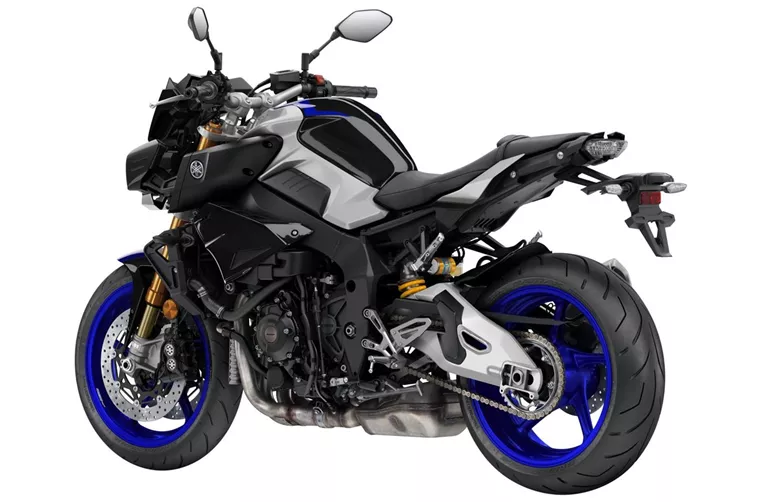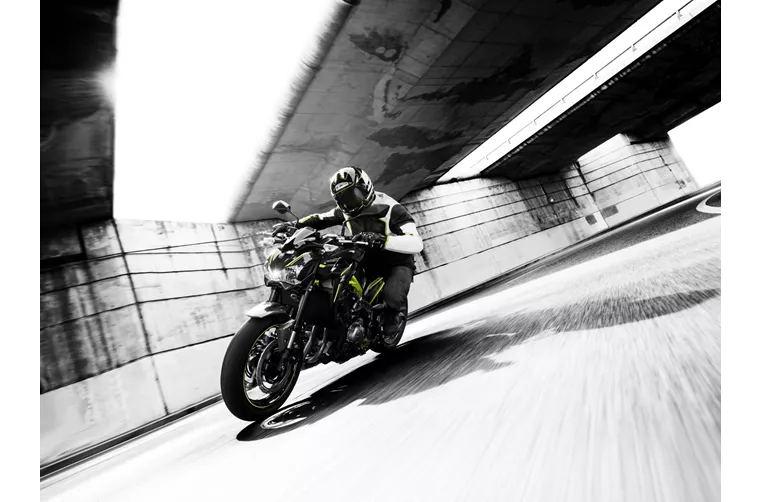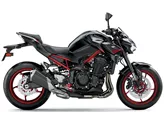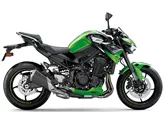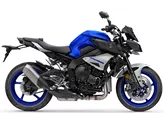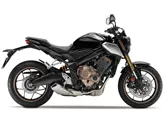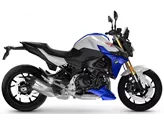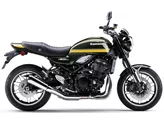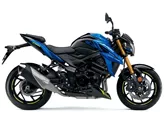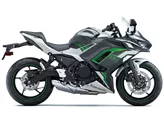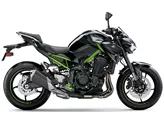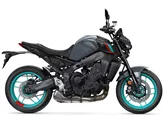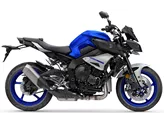Yamaha MT-10 SP 2021 vs. Kawasaki Z900 2018

Yamaha MT-10 SP 2021
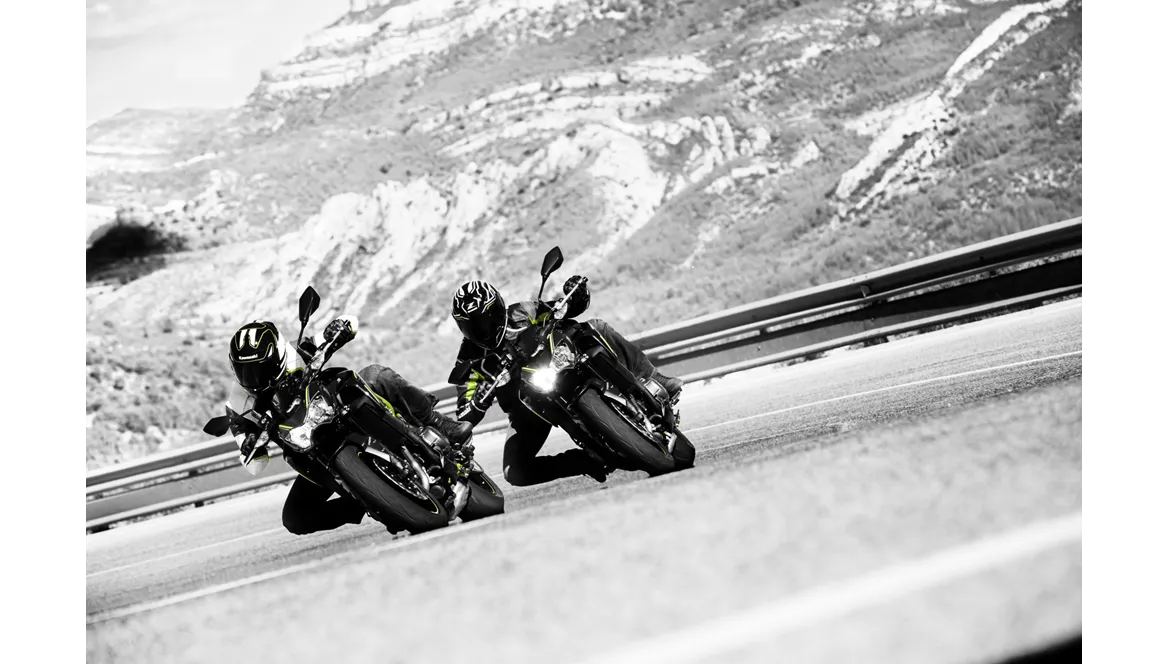
Kawasaki Z900 2018
Overview - Yamaha MT-10 SP 2021 vs Kawasaki Z900 2018
The Yamaha MT-10 SP 2021 and the Kawasaki Z900 2018 are both naked bikes with similar engine types, inline-four cylinders, and liquid cooling systems. However, there are several differences between the two models.
In terms of engine power, the Yamaha MT-10 SP 2021 boasts a higher output with 160 HP compared to the Kawasaki Z900 2018's 125.4 HP. This translates to a more powerful and exhilarating riding experience on the Yamaha. The torque figures also favor the Yamaha, with 111 Nm compared to the Kawasaki's 98.6 Nm.
Both bikes feature fuel injection systems, ensuring efficient and precise fuel delivery. This contributes to improved throttle response and overall performance.
In terms of suspension, both bikes have upside-down telescopic forks at the front and swing arm suspension at the rear. The shock absorbers on both bikes are also monoshocks made of aluminum. These suspension setups provide excellent handling and stability, allowing for confident cornering and a smooth ride.

Yamaha MT-10 SP 2021
The Yamaha MT-10 SP 2021 features an aluminum frame with a Deltabox design, which is known for its rigidity and lightweight construction. On the other hand, the Kawasaki Z900 2018 has a steel frame with a double cradle design. While the steel frame may offer slightly less rigidity, it provides a solid and stable platform for the bike.
Both bikes are equipped with double disc brakes at the front, ensuring strong and reliable stopping power. The Yamaha MT-10 SP 2021 has larger diameter discs at 320 mm compared to the Kawasaki Z900 2018's 300 mm discs. This may result in slightly better braking performance on the Yamaha.
In terms of advanced rider assistance systems, the Yamaha MT-10 SP 2021 comes with ABS and traction control, providing added safety and stability. The Kawasaki Z900 2018, on the other hand, only has ABS. This gives the Yamaha an advantage in terms of advanced safety features.
Both bikes have similar tire sizes, with a front tire width of 120 mm and a rear tire width of 180 mm or 190 mm. The wheelbase on the Yamaha MT-10 SP 2021 is slightly shorter at 1400 mm compared to the Kawasaki Z900 2018's 1450 mm. This may result in slightly different handling characteristics between the two bikes.
In terms of seat height, the Yamaha MT-10 SP 2021 has a higher seat at 825 mm compared to the Kawasaki Z900 2018's 795 mm. This may be more suitable for taller riders on the Yamaha.
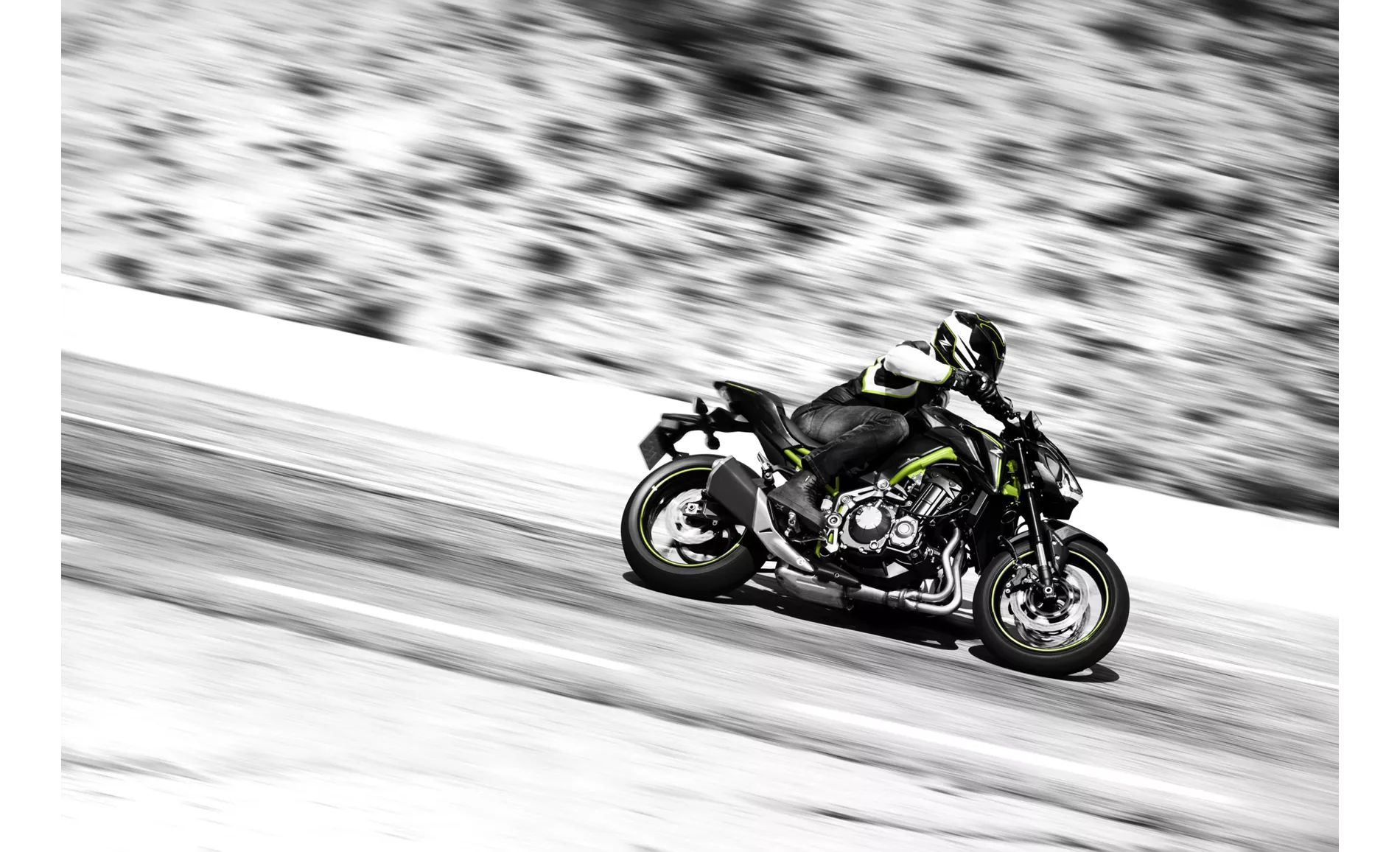
Kawasaki Z900 2018
In terms of weight, both bikes have a similar curb weight of 210 kg with ABS. This ensures a nimble and agile riding experience on both models.
In terms of strengths, the Yamaha MT-10 SP 2021 is praised for its unconventional sound, punchy engine, high-quality chassis and suspension, acceptable wind protection, and surprisingly comfortable seating position. On the other hand, the Kawasaki Z900 2018 is praised for its powerful and silky engine, great sound, sharp and sporty look, low seating position, and easy handling and maneuverability.
In terms of weaknesses, the Yamaha MT-10 SP 2021 is criticized for its traction control and ABS not being dependent on lean angle, the shift assistant not being flawless and lacking a blipper, and its high price. The Kawasaki Z900 2018, on the other hand, is criticized for its lack of traction control and the knee angle being strenuous for tall riders in the long run.
In conclusion, the Yamaha MT-10 SP 2021 and the Kawasaki Z900 2018 are both impressive naked bikes with their own strengths and weaknesses. The Yamaha offers a more powerful engine, advanced rider assistance systems, and a higher seat height, while the Kawasaki provides a smooth and powerful engine, a sharp and sporty look, and easy handling. Ultimately, the choice between the two will depend on the rider's preferences and priorities.
Technical Specifications Yamaha MT-10 SP 2021 compared to Kawasaki Z900 2018
Pros and Cons in comparison
Pros and Cons in comparison
Yamaha MT-10 SP 2021
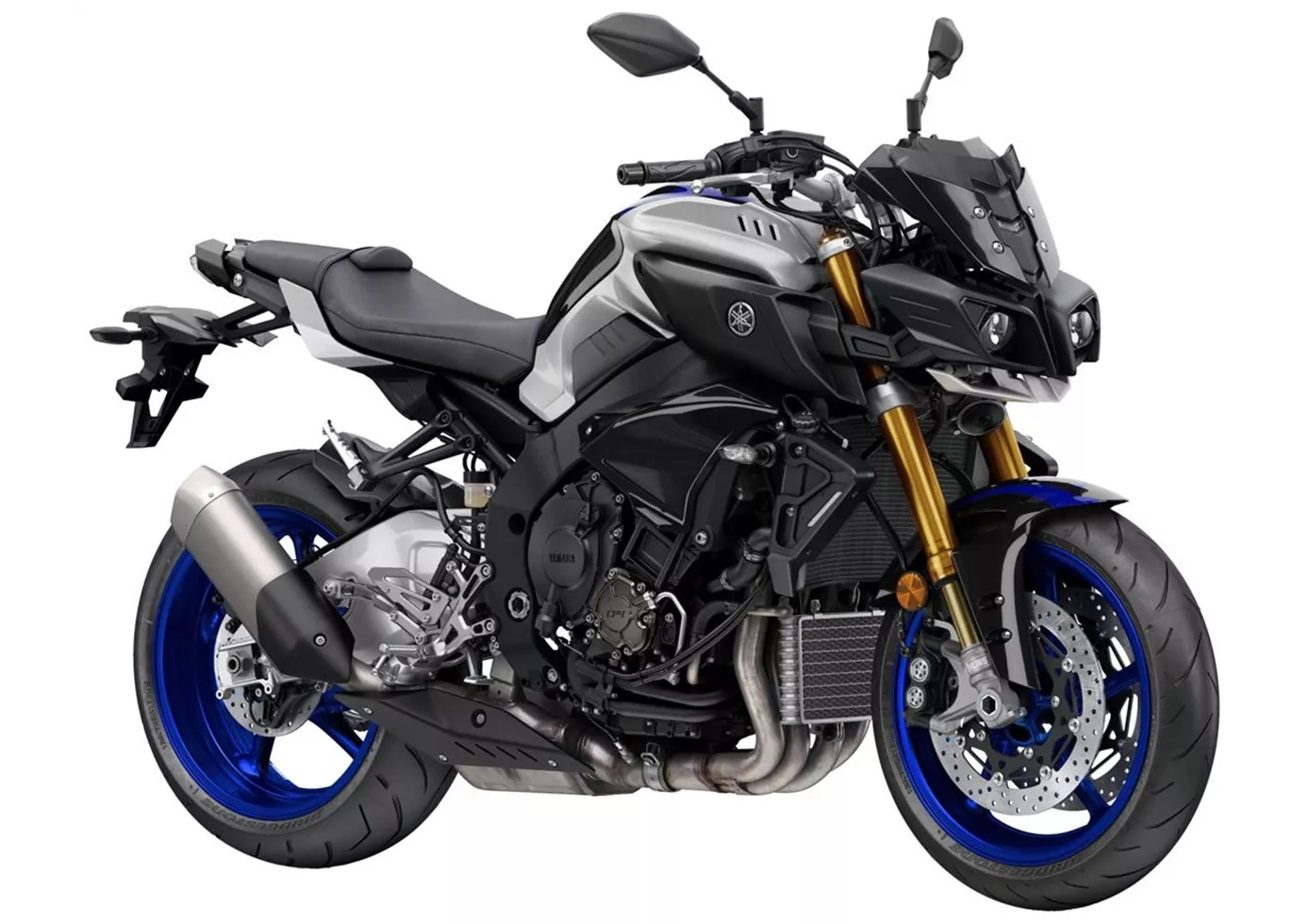
The Yamaha MT-10 SP inspires with a high degree of perfection combined with a truckload of emotion. Rarely do Japanese manufacturers succeed in penetrating so deeply into the domain of Europeans. The bike rides very nastily when needed, but can also be used quite civilly in city traffic. On top of that, the electronically adjustable Öhlins suspension provides a lot of riding comfort. All in all, an outstanding all-rounder that can do much more than just look bad.
Kawasaki Z900 2018
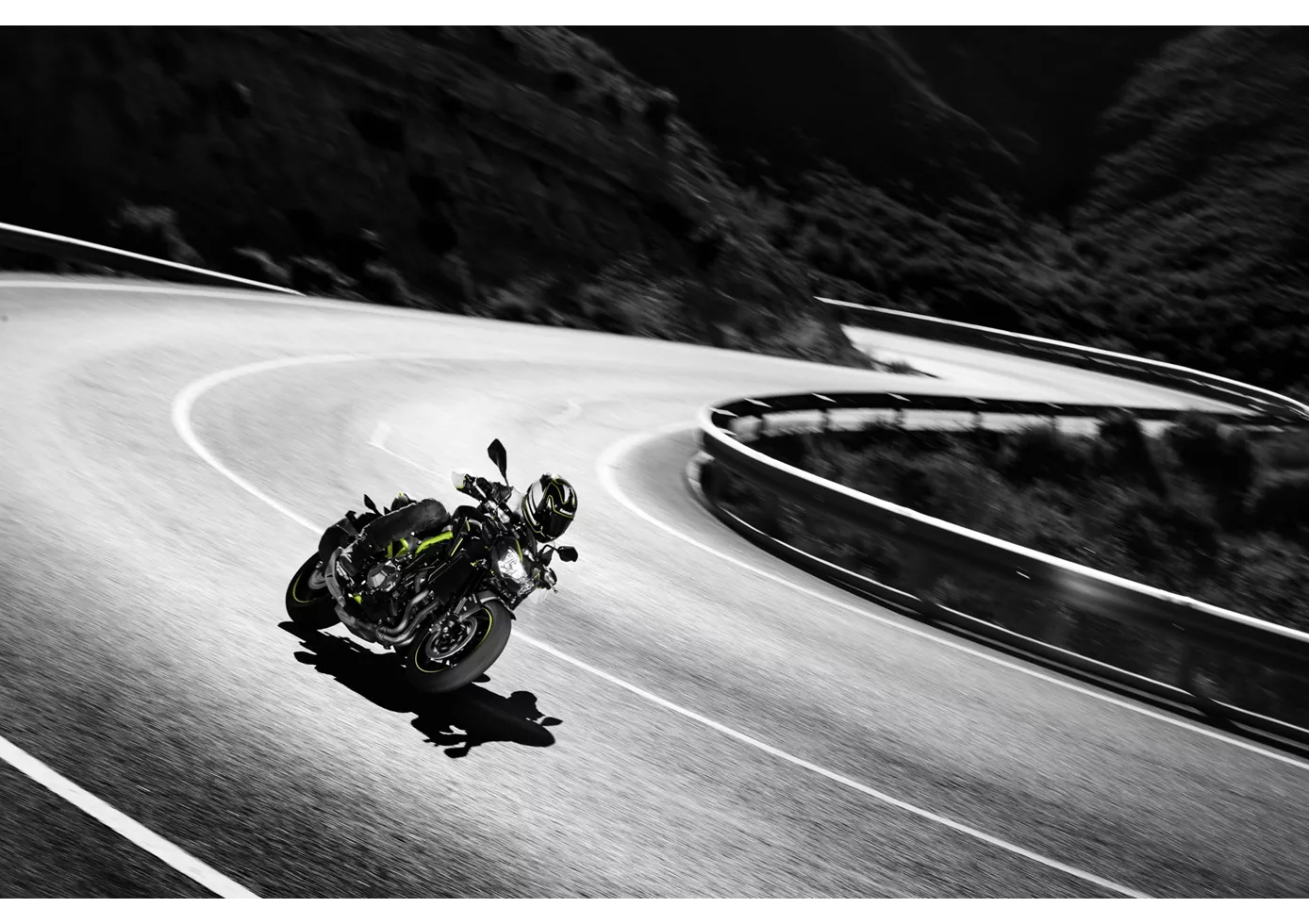
In the hotly contested naked bike segment, the Z900 plays right at the front. Above all, its engine is absolutely terrific, runs incredibly silky and offers rich power in all rev regions - as befits a Japanese four-cylinder. Its sporty, aggressive appearance matches this. It does without electronic bells and whistles, but still conveys a lot of confidence when chasing corners, braking and accelerating out of them. The low seat is especially beneficial for smaller riders, but taller riders might miss a flatter knee angle on long distances. The low weight and compactness make the Z900 particularly agile and easy to handle. A sporting cannon that is also extremely appealing in terms of price
Price Comparison Avarage Market Price Yamaha MT-10 SP vs Kawasaki Z900
There are a few key differences between a Yamaha MT-10 SP 2021 and a Kawasaki Z900 2018. It takes less time to sell a Kawasaki Z900 with 112 days compared to 138 days for the Yamaha MT-10 SP. Since model year 2017 1000PS.de editors have written 18 reviews for the Yamaha MT-10 SP and 46 reviews for the Kawasaki Z900 since model year 2017. The first review for the Yamaha MT-10 SP was published on 10/4/2016 and now has more than 28,600 views. This compares to more than 93,200 views for the first review on Kawasaki Z900 published on 11/11/2016.
